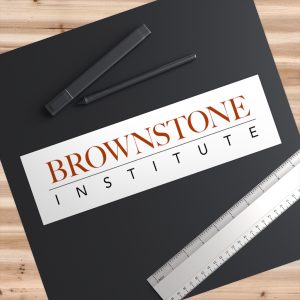There’s a peculiar comfort in believing that things simply happen by accident. That the powerful don’t conspire, that institutions don’t coordinate, that the crumbling pillars of society represent mere happenstance rather than design. I’ve come to call these people “accidentalists” – those who find refuge in randomness, who dismiss patterns as paranoia.
The Cost of Seeing
Like the red pill in The Matrix, recognizing patterns changes everything. Many choose comfortable illusions over uncomfortable truths. As Hannah Arendt observed, “The ideal subject of totalitarian rule is not the convinced Nazi or the convinced Communist, but people for whom the distinction between fact and fiction no longer exists.”
For the professional class – academics, journalists, corporate managers – acknowledging these patterns means confronting their own complicity. Their success, their status, their sense of self – all are built on supporting rather than questioning power structures.
The accidentalist mindset offers refuge from this self-examination. Better to dismiss than face one’s role in the machinery.
The Death of Coincidence
It requires impressive mental gymnastics to believe that those with power – who achieved it through careful planning and coordination – suddenly stop planning and coordinating once they obtain it. That they abandon the very tools that brought them success. That they become, somehow, passive observers of their own decline.
When confronted with evidence of coordination – be it documented government censorship, institutional narrative control, or coordinated media campaigns – the accidentalist draws an arbitrary line. “Well, that’s different,” they say. “That’s not a conspiracy, that’s just…” And here they trail off, unable to articulate why some coordinated actions by the powerful count as conspiracies while others are merely business as usual.
The Weaponization of Skepticism and Manufacturing Outcasts
The term “conspiracy theory” itself reveals institutional manipulation. The CIA’s 1967 dispatch (Document 1035-960) explicitly directed media assets to use this label to discredit Warren Commission critics. They transformed skepticism into pathology – making the very act of questioning power seem delusional.
This weaponization of language worked brilliantly. Today, pattern recognition itself becomes suspect. In 2022, the New York Times published perhaps the most revealing example of institutional arrogance – an essay warning citizens against “doing their own research,” suggesting they weren’t competent to question expert conclusions. The message was clear: leave the thinking to us. Trust the experts. Stay in your lane.


That this patronizing directive came from a publication with its own history of spreading misinformation speaks volumes. The accidentalist, naturally, sees no problem with experts telling people not to think for themselves. They miss the deeper implication: when institutions actively discourage independent investigation, they reveal their fear of informed scrutiny.
The pattern is unmistakable: identify skeptics, discredit them, make examples of them. The accidentalist never asks why questioning power triggers such coordinated attacks.
Today’s Denials, Tomorrow’s Headlines
Consider a revealing moment: In 2021, several of my friends eagerly recommended Dopesick, (“I think you would especially like this”), condemning the Sacklers’ manipulation of medicine for profit. Yet these same friends mocked me for questioning pharmaceutical companies today – despite their status as the most heavily criminally fined industry in human history. Those who recognized similar patterns were labeled ‘anti-vaxxers’ and ‘threats to public health.’ Scientists suggesting lab origins became ‘conspiracy theorists.’ The pattern repeats: identify skeptics, discredit them, make examples of them.
Let’s examine three cases where “conspiracy theories” transformed into acknowledged history:
- The Sugar Deception: In the 1960s, the sugar industry paid Harvard scientists to blame heart disease on fat instead of sugar. These industry-funded studies shaped dietary guidelines for decades, creating a massive public health crisis through “low-fat” but sugar-laden foods. The accidentalist views this as an isolated historical incident rather than a template for corporate manipulation of science.
- The Tobacco Playbook: For decades, tobacco companies buried evidence linking smoking to cancer while funding research to create doubt. Their infamous internal memo stated, “Doubt is our product.” The accidentalist sees this as a unique case rather than recognizing the same tactics in current corporate practices.
- The Vioxx Cover-up: Merck concealed evidence that their blockbuster drug caused heart attacks, leading to an estimated 60,000 deaths. Internal documents revealed executives strategizing to “neutralize” critics. The accidentalist treats this as an aberration rather than standard operating procedure.


The Pattern Repeats
Consider the timing: A 342-page Patriot Act appeared weeks after 9/11. Operation Lock Step described pandemic measures in 2010. Event 201 simulated responses in October 2019 – the same day as the Wuhan Military Games. Months later, these exact measures were implemented globally. What are the odds?
The patterns of control repeat at every scale:
- Globally: WHO/WEF coordination
- Nationally: Regulatory capture
- Corporate: Internal suppression of dissent
- Local: Community pressure to conform
Power’s fingerprints are everywhere. Once you see them, they can’t be unseen.
The Corporate Convergence
Here’s where the accidentalist worldview truly fails: These weren’t separate conspiracies but a single system perfecting its methods. The tobacco giants that knowingly addicted millions didn’t disappear – they bought food companies (RJR Nabisco) and continued manipulating public health. Those same food conglomerates now merge with pharmaceutical corporations (Monsanto/Bayer), putting the same scientists who engineered addictive cigarettes and processed foods in charge of our medicine.
These corporations don’t just share ownership – they share methods. The same tactics used to addict smokers were applied to processed foods. The same research manipulation that hid tobacco dangers now obscures pharmaceutical risks. The same media control that sold cigarettes as healthy now promotes untested medical interventions.
The Reality Merchants
Consider the current media response to Robert F. Kennedy, Jr.’s nomination as HHS Secretary. The coordinated messaging is impossible to miss – talking heads across networks uniformly label him a “conspiracy theorist” and “danger to public health,” never addressing his actual positions. These are the same voices that championed destructive pandemic policies, now attempting to discredit someone who questioned their wisdom.
Or examine Dr. Jay Bhattacharya – a Stanford professor whose expertise was unquestioned until he challenged lockdown policies. Despite eventual vindication, the institutional response was swift: coordinated media attacks, academic ostracism, and algorithmic suppression. The pattern is clear: expertise is respected only when it aligns with institutional interests.
Engineering Compliance
The template begins with manufactured scarcity and enforced dependency. But understanding the mechanics of fiat systems is just the beginning. The real revelation is recognizing how this architecture extends beyond money into every domain of human existence.
Covid-19 didn’t create new systems of control – it revealed existing ones. The infrastructure for rights suspension, narrative enforcement, and dissent silencing was already in place. The “Great Reset” wasn’t conceived in 2020. The surveillance architecture wasn’t built overnight. The ability to coordinate global policy, control information flow, and reshape human behavior wasn’t developed in response to a crisis – it was waiting for one.
Moreover, the selective enforcement of truth reveals power’s preferences. Regardless of what one thinks about Alex Jones’ Sandy Hook statements, his $900 million fine stands in stark contrast to the total impunity enjoyed by the New York Times and other media outlets whose WMD lies led to hundreds of thousands of deaths. This reveals how power protects its own while punishing outsiders, even when institutional lies cause far greater harm.
The Psychology of Disbelief
“That can’t be true” becomes the mind’s defense mechanism against pattern recognition. This isn’t natural skepticism – it’s programmed rejection (as detailed in “How the Information Factory Evolved”). The larger the pattern, the stronger the denial. They’ve weaponized skepticism against itself, creating a population that reflexively defends authority while attacking any challenge to it.
We’re watching the early stages of converging control systems, with clear signs of what’s coming:
- Digital IDs linked to health records
- CBDCs enabling programmable money
- Social credit systems disguised as ESG metrics
- Surveillance capitalism merging with state control
- Artificial scarcity through controlled supply chains
These aren’t predictions – they’re systems actively being built and tested across the globe, from China’s social credit system to Nigeria’s CBDC rollout.
Understanding the Impossible
“But how could they pull this off without anyone knowing?” the accidentalist asks. The answer is simple: compartmentalization. Like the Manhattan Project, most people in global institutions are unaware of the larger plan they’re working on. Even in tech companies, the Gmail team has no idea what YouTube’s content moderators or Google Earth’s mapping division are doing. Each department serves its function without seeing the whole. Professionals across academia, corporate America, and media unknowingly serve a broader agenda, often believing they’re working for noble causes.
The truth isn’t hidden – it’s protected by its own audacity. As Marshall McLuhan observed, “Only the small secrets need to be protected. The large ones are kept secret by public incredulity.” This explains why major revelations often hide in plain sight: the scale of coordinated deception exceeds what most people can psychologically accept as possible.
Breaking the Spell
The ultimate revelation isn’t how powerful they are – it’s how fragile their control really is. Their greatest strength – total integration – is also their greatest weakness. Complex systems have more failure points. The more systems are interconnected, the more a disruption in one area can cascade through the whole.
The solution isn’t fighting their systems directly – it’s building parallel structures that make them irrelevant:
- Local food systems over global supply chains
- Peer-to-peer networks over controlled platforms
- Direct exchange over surveillance currency
- Natural immunity over subscription immunity
- Real communities over virtual spaces
The Choice
The question isn’t whether power conspires – it’s why we’re so resistant to seeing it. What comfort do we find in believing in accidents? What fear do we harbor of seeing design?
Perhaps it’s simpler to believe in chaos than to confront order. Perhaps it’s easier to dismiss than to engage. Perhaps the accidentalist position isn’t about truth at all – it’s about maintaining the comfort of ignorance in a world that increasingly demands awareness.
Because once you see the pattern, you can’t unsee it. Once you understand that power coordinates, plans, and conspires by its very nature, the only wacky conspiracy theory becomes believing it doesn’t.
The awakening isn’t something that happens to us – it’s something we choose. And that choice, multiplied across millions of individuals, will determine whether humanity enters a new dark age or experiences its greatest renaissance.
The question isn’t whether you see it. The question is: what will you do once you can’t unsee it?
Join the conversation:


Published under a Creative Commons Attribution 4.0 International License
For reprints, please set the canonical link back to the original Brownstone Institute Article and Author.









